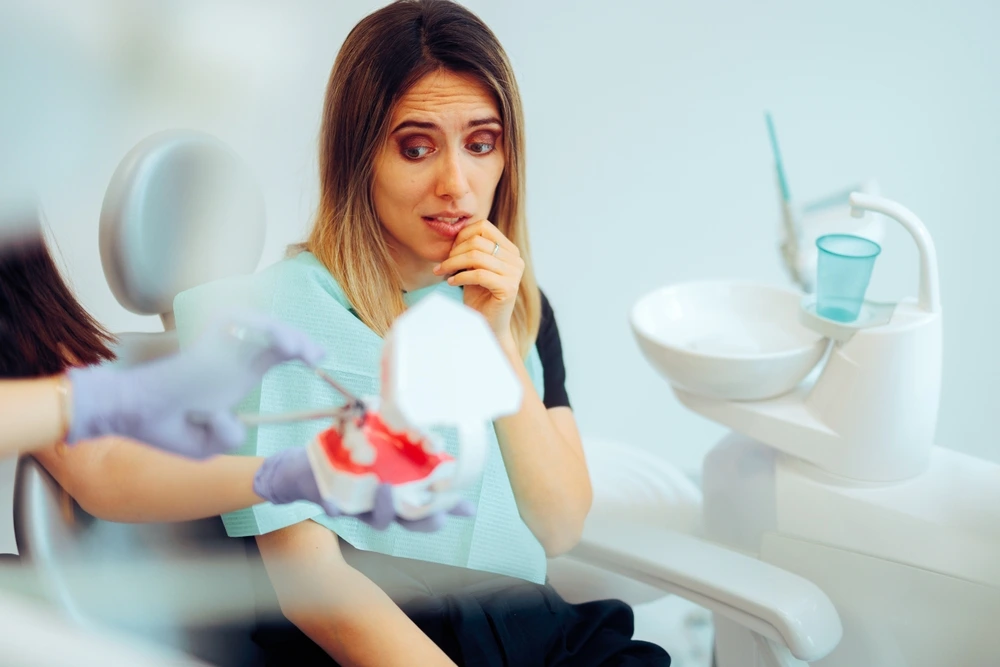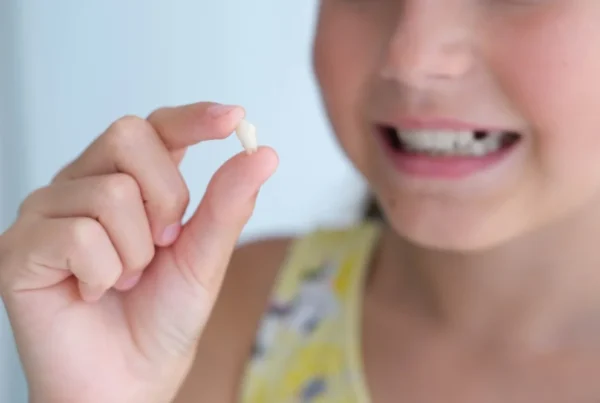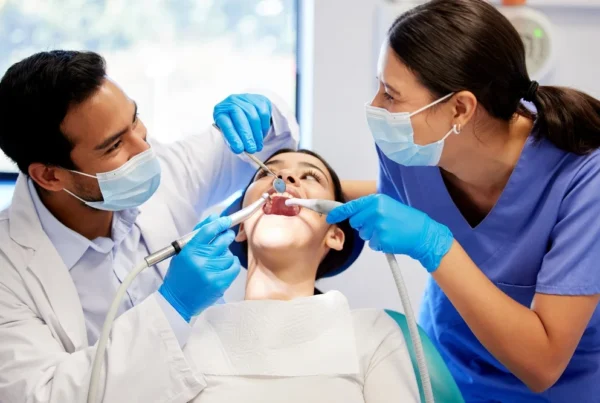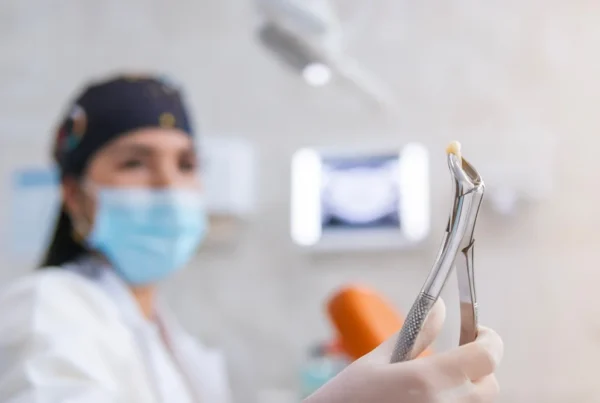Proper post-extraction care prevents complications and speeds healing through protecting blood clots, gentle oral hygiene, and dietary modifications. Most patients heal completely within 7-10 days by following aftercare instructions carefully. Grand Prairie patients benefit from comprehensive guidance on managing pain, swelling, and preventing dry socket during recovery. Professional support remains available throughout the healing process to address concerns and ensure optimal outcomes.
After a tooth extraction, it is crucial to follow specific care instructions to ensure proper healing of your mouth. This tailored approach to aftercare can help prevent complications and aid in a smoother recovery process. Dr. Behrooz Khademazad’s 34 years of dental experience in Grand Prairie has helped countless patients navigate post-extraction recovery successfully.
Managing the extraction site right after the procedure is paramount for healing success. Ensuring that you avoid disturbing the area, like avoiding spitting or using straws, helps to maintain the initial blood clot essential for healing. This step is critical as it lays the foundation for the rest of the recovery period and prevents complications.
Striking a balance with oral hygiene becomes important during the healing phase. While it is necessary to keep your mouth clean to prevent infection, vigorous brushing or rinsing can disrupt the healing process. We recommend gently rinsing with salt water and careful brushing around the adjacent teeth to maintain oral health without risking the clot’s integrity.
Lifestyle adjustments, such as what you eat and your physical activity, directly impact healing outcomes. Soft foods and limited physical activity are advised during the initial days following extraction. These changes help ensure that the extraction site remains undisturbed, allowing for optimal healing conditions throughout recovery.
Immediate Post-Procedure Guidelines
Effective post-extraction care is vital for a complication-free healing journey that protects your investment in oral health. Grand Prairie Family Dental is dedicated to delivering comprehensive guidance that ensures a smooth recovery, with a focus on protecting the extraction site, maintaining oral hygiene, and reducing discomfort throughout the process.
Protecting the extraction site immediately after the procedure becomes our first concern for every patient. By avoiding actions that could disturb the clotting, such as strenuous rinsing or using straws, we help form a stable foundation for healing. We’ll guide you through the important do’s and don’ts in the hours right after an extraction to safeguard this delicate area.
Maintaining cleanliness without irritation represents the second critical step in successful recovery. While it is important to keep the rest of your mouth clean, we advise against direct contact with the extraction site. We recommend rinsing with a mild saltwater solution to cleanse gently, a method that is effective yet soothing, reducing the risk of infection while encouraging healing.
Ensuring minimal discomfort during recovery becomes a key aspect of our comprehensive approach. We are here to make your aftercare as comfortable as possible with specific instructions on managing pain and swelling. This includes using cold compresses and adhering to prescribed pain management strategies that promote comfort throughout healing.
Critical First 24 Hours
Achieving a successful recovery after tooth extraction hinges on effectively navigating the first 24 hours post-procedure. This initial phase is critical for developing a stable blood clot, avoiding dry socket, and practicing gentle care, as outlined by Grand Prairie Family Dental’s experienced team.
The formation of a stable blood clot represents the cornerstone of proper healing after extraction. The clot acts as a protective cover for the underlying bone and nerves and assists in the formation of new tissue. To ensure this natural process occurs properly, we advise you to avoid actions such as vigorous rinsing or sucking motions that can disturb this critical development.
Preventing dry socket, a condition where the protective blood clot is dislodged, becomes another crucial focus area. This condition can lead to increased pain and significantly delayed healing that extends recovery time. To decrease the risk, we recommend avoiding smoking, using straws, or any sucking action that could potentially dislodge the protective clot.
Gentle care also plays a vital role in your recovery journey during these initial hours. Handling the extraction site with care, avoiding hard foods, and not brushing the area directly can help prevent dry socket and other complications. We offer ongoing support and detailed guidance to promote gentle treatment of the area, facilitating a safe and swift healing process.
Modified Oral Hygiene Practices
Effective dental hygiene after an extraction is pivotal to preventing infection while avoiding disturbance to the sensitive extraction site. This involves a completely redefined cleaning routine, careful attention to the area surrounding the wound, and an adaptation to new practices for oral care without provoking complications.
Revising your dental hygiene routine post-extraction becomes essential for maintaining oral health during recovery. Instead of your usual brushing and flossing regime, which could dislodge the blood clot, we recommend a gentle approach. Soft-bristled brushing on adjacent teeth and avoiding the extraction site altogether are key components of this modified routine.
Key oral hygiene modifications include:
- Use soft-bristled toothbrushes and gentle pressure on surrounding teeth
- Rinse with prescribed saltwater solution instead of vigorous mouthwash
- Avoid flossing directly around the extraction site for 24-48 hours
- Focus cleaning efforts on areas away from the healing socket
- Replace your toothbrush after healing to prevent reinfection
Focusing on the adjacent areas without touching the extraction site helps prevent the buildup of harmful bacteria. Rinse your mouth with a saline solution or an antimicrobial mouthwash prescribed by our dentists to cleanse these areas effectively without causing any harm to the healing site or disrupting the protective clot.
Adjusting to these new oral care practices may require some initial effort, but they remain vital for your recovery success. These modifications to your hygiene habits will ensure a cleaner oral environment and contribute to a faster and healthier healing process, ultimately supporting your overall dental health during this critical period.
Dietary and Activity Adjustments
Post-extraction healing requires careful adjustments to daily habits, specifically in your diet and physical activity patterns. These changes are designed to safeguard the extraction site, ensure optimal comfort, and expedite the recovery process while preventing complications that could delay healing.
Dietary modification becomes the first essential change during the recovery period. Since the extraction site remains vulnerable, selecting soft, easy-to-chew foods helps prevent any undue pressure that could disrupt the protective clot. For instance, opting for smoothies, soups, and mashed vegetables can provide necessary nutrition without the risk of harming the sensitive healing area.
Limits on physical activity form the second necessary adjustment during early recovery stages. Vigorous exercises increase blood flow and heart rate, which can lead to bleeding at the extraction site and disrupt healing. We recommend gentle walks and avoiding activities like heavy lifting or high-impact sports in the immediate days following your procedure.
The third aspect involves a well-managed rest period, which proves imperative for a quick return to normalcy. Adequate rest not only supports the body’s natural healing process but also minimizes the likelihood of complications that could extend recovery time. Our team provides clear guidance on how to balance necessary activity with appropriate rest to best support your body’s ability to heal post-extraction.
Comprehensive Recovery Strategy
In response to the challenges of post-extraction care, our clinic has designed a strategic plan that is clear, structured, and responsive to the different stages of recovery. This comprehensive plan aims to provide comfort, simplicity, and thorough support to patients during their entire healing journey.
Our first measure involves providing detailed guidance for proper rest and positioning after extraction. Adequate rest is vital after a dental extraction to speed up the healing process and prevent complications. Our instructions include how long to rest, what positions help reduce swelling, and when it might be safe to gradually return to regular activities without compromising the extraction site.
We focus extensively on dietary advice, which becomes key for avoiding complications during healing. Our guidance includes specific foods to consume and what to avoid, ensuring you maintain proper nutrition without placing stress on the wound. We’ll provide examples of soft, nutritious foods and how to prepare them, incorporating them easily into your everyday meals during recovery.
Managing discomfort effectively forms a cornerstone of our post-extraction care plan for every patient. We are dedicated to making sure you have access to pain management strategies that work effectively, whether that’s through the use of prescribed medication or natural remedies such as cold compresses that can be applied to the face to reduce swelling and pain.

Warning Signs and When to Seek Help
Making informed decisions on when to seek further assistance becomes an essential aspect of aftercare that ensures patient safety. In our clinic, we provide clear criteria for normal healing signs and educate patients on identifying potential complications that warrant immediate dental intervention.
One key indicator for concern involves abnormal swelling patterns after the initial 48 hours. While some degree of swelling is expected after extraction, excessive or increasing swelling can point to an underlying issue such as infection. We provide visual examples and describe the normal inflammation patterns to compare with, which enables you to swiftly recognize any concerning deviations.
Persistent bleeding represents another critical trigger that requires professional attention. A certain amount of bleeding is common after a tooth extraction, but if bleeding continues uncontrolled beyond the first day, it requires immediate attention. Our guidance explains how to manage typical bleeding and at what point to reach out for our professional assistance to ensure your continued well-being.
We emphasize that while discomfort is expected during recovery, extreme or worsening pain could signify a serious problem. If the prescribed pain management strategies prove ineffective or discomfort escalates significantly, this becomes a clear signal to contact our clinic immediately. Our goal is to help you differentiate routine soreness from pain that might indicate complications, securing a safe recovery environment.
Professional Support and Resources
Ensuring robust support and professional guidance throughout the recovery period represents a firm commitment at Grand Prairie Family Dental. We provide direct assistance, convenient communication avenues, and comprehensive resources to empower patients and address all their post-extraction needs effectively.
Our team’s accessibility becomes a top priority during your recovery period. We maintain readiness to offer support and address any postoperative questions or concerns that arise. Whether it’s a question about medication, discomfort levels, or the healing process, our experienced dental professionals are here to provide the expert advice you need, when you need it most.
With our patient portal, communication becomes easy and secure for ongoing support. This online service facilitates prompt and private exchanges with our office, allowing you to report progress, seek advice, or arrange for follow-up care directly from your home or mobile device. This contributes to a comfortable and anxiety-free recovery experience with professional guidance always available.
Our array of supportive resources is specifically designed to guide you through the healing process comprehensively. This includes detailed aftercare instructions, tips for managing discomfort at home, and preventive measures to avoid complications. By equipping you with this essential knowledge, we aim to address any uncertainties you may have and foster an environment conducive to smooth and speedy recovery.
Evidence-Based Healing Protocols
To secure a rapid and uncomplicated healing period after tooth extraction, it becomes essential to adhere to best practices that protect against risks and promote prompt recovery. These evidence-based best practices are crafted to manage pain effectively, reduce swelling, and safeguard oral health throughout the healing process.
Managing pain post-extraction becomes the first critical practice to follow for optimal comfort. We provide clear guidance on the proper use of prescribed pain relievers and recommend cold packs to control discomfort effectively. By following these pain management techniques closely, patients can ensure a more comfortable and tolerable recovery process without complications.
Essential preventive measures for successful healing include:
- Apply ice packs for 15-20 minutes at intervals during first 24 hours
- Take prescribed medications exactly as directed by your dentist
- Sleep with your head elevated to reduce swelling and bleeding
- Avoid smoking and alcohol which can delay healing significantly
- Schedule and attend follow-up appointments as recommended
The second pivotal best practice involves reducing swelling through proven methods. Rest and applying ice packs intermittently during the first 24 hours can keep swelling to a minimum, further diminishing the risk of complications. Proper positioning during rest also contributes to reduced swelling and improved comfort during recovery.
Maintaining overall mouth health becomes the third essential component of successful post-extraction care. This includes adhering to a soft-food diet as directed, which helps protect the extraction site from trauma. We also provide specific oral hygiene instructions which, when diligently followed, prevent infection and promote optimal healing conditions for a swift return to normal function.
Conclusion
At the core of Grand Prairie Family Dental’s mission lies a commitment to your well-being, ensuring that every piece of advice we offer aims to enhance your comfort and facilitate the smoothest possible recovery. With careful adherence to our aftercare instructions, you can navigate the post-extraction period with confidence and peace of mind.
Our comprehensive aftercare plan is designed to provide clear and effective guidelines for maintaining the health of your mouth following an extraction procedure. This includes specific recommendations on diet, activity levels, and oral hygiene that, when followed properly, prevent complications and support quick recovery. With careful observance of these instructions, you can minimize discomfort and return to your normal activities as swiftly as possible.
Dr. Behrooz Khademazad’s 34 years of dental experience in Grand Prairie has shown that patients who follow proper aftercare instructions heal faster and experience fewer complications. Our team remains ready to support you with personalized guidance at every step of your recovery. Whether you have questions about pain management, swelling, or any unexpected symptoms, we provide professional recommendations based on decades of successful patient care. By working together, we ensure a healing process that is not only safe but also optimized for the quickest possible return to optimal oral health.
Schedule your consultation today with Dr. Behrooz Khademazad and discover what personalized dental care in Grand Prairie, TX truly feels like.
Schedule Your Consultation Today!
Grand Prairie Family Dental
2475 W Pioneer Pkwy Grand Prairie, Texas, 75051
Google Reviews: See More Reviews From Grand Prairie Family Dental
View information about local places in our community.
Driving Directions to Our Practice
Frequently Asked Questions
How can I prevent complications after a tooth extraction?
To ensure a smooth healing process, it’s essential to follow your dentist’s aftercare instructions closely and completely. This means protecting the extraction site from disturbance, maintaining gentle oral hygiene around the area, managing pain and swelling responsibly, and getting adequate rest as recommended. Avoid activities that could dislodge the blood clot, like drinking through straws, smoking, or vigorous rinsing, to prevent complications like dry socket.
When should I seek help after a tooth extraction?
It’s normal to experience some discomfort and swelling after an extraction, but certain signs require immediate professional attention. Contact your dentist if you notice excessive or persistent bleeding beyond 24 hours, abnormal swelling that worsens after 48 hours, or pain that escalates or doesn’t respond to prescribed medication. These symptoms could indicate a possible infection, dry socket, or other issues that need professional care.
Can I eat normally after tooth extraction?
Right after the procedure, it’s best to stick to soft foods like yogurt, smoothies, soups, and mashed vegetables for the first few days. Avoid hard, sticky, crunchy, or very hot foods that might irritate the extraction site or dislodge the protective blood clot. Gradually reintroduce firmer foods to your diet as healing progresses and according to your mouth’s comfort level, typically after 3-5 days.
Related Articles
Learn More About:






